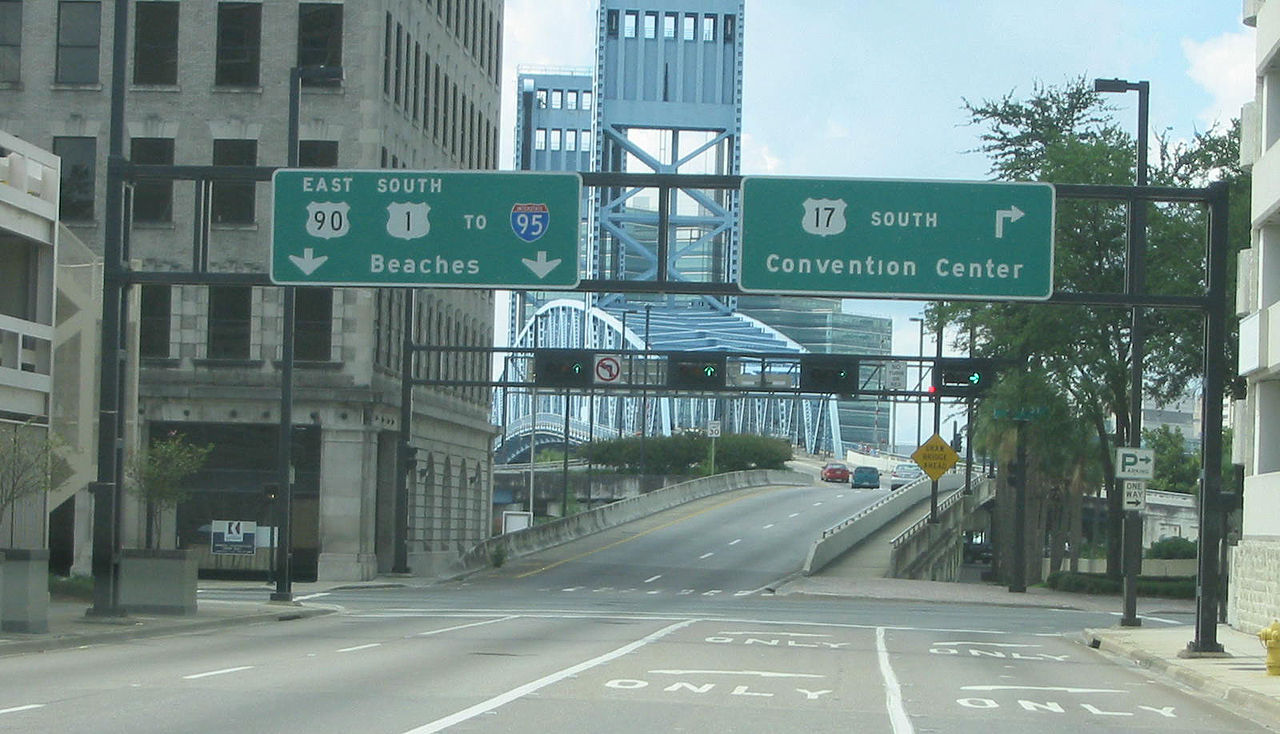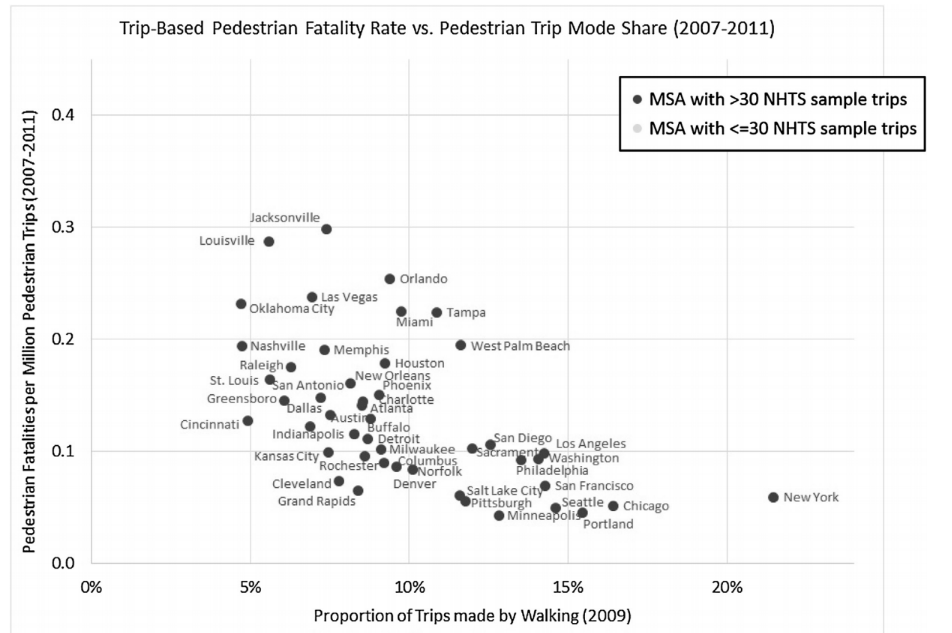Which Cities Are Dangerous for Walking?
UWM study finds worst cities are five times more dangerous for pedestrians.

Highway signs downtown bode poorly for pedestrian safety. Photo by SPUI.
All the hype about cell phone use being to blame for pedestrian deaths doesn’t hold up when you review the data. To get a sense of the real sources of risk for people on foot, it helps to look at where fatal crashes happen, because fatality rates have a very strong geographic component. That’s true both within cities — where fatalities tend to be concentrated on a relative small share of streets — and from city to city.
A new study from researchers at the University of Wisconsin-Milwaukee finds huge disparities in the risk of walking and biking between different American cities. The likelihood of being killed is about five times higher in the most dangerous regions than in the safest ones.
Several Florida cities, as usual, are among the most dangerous for walking, while cities with stronger transit systems and walkable street grids tend to be the safest.
To assess the relative safety in these cities, authors Robert Schneider, Aida Sanatizadeh, and Jason Vargo used federal travel survey responses and crash fatality data. By factoring in how much people walk and bike, they were able to compare safety per trip, not just per capita, though the authors caution that the bike safety data is less robust than the pedestrian data.
The results suggest public policies and physical characteristics separate the safer cities from the more dangerous ones, the authors told the UWM press shop:
“We compared our lists of the safest and most dangerous regions with the ‘Walk Friendly Community’ and ‘Bicycle Friendly Community’ rankings, which are based on the investments cities make in infrastructure and programs,” Schneider said. “The general connection between high rankings and low fatality rates is a good indication that those investments have paid off.”
Schneider also raises another possibility: “Communities that were developed in a more pedestrian- or bicycle-friendly pattern to begin with — typically older urban areas — may have chosen to continue to invest in walking and bicycling, meaning that the relationship may work in both directions.”
In either case, the findings suggest an important connection between walk-friendly and bicycle-friendly communities and safety, he said.
Story by Angie Schmitt. A version of this story originally ran on Streetsblog. Angie Schmitt is a newspaper reporter-turned planner/advocate who manages the Streetsblog Network from glamorous Cleveland, Ohio. She also writes about urban issues particular to the industrial Midwest at Rustwire.com.
Streetsblog
-
Car Culture Cements Suburban Politics
![Sprawl. Photo by David Shankbone (David Shankbone) [GFDL (http://www.gnu.org/copyleft/fdl.html) or CC-BY-SA-3.0 (http://creativecommons.org/licenses/by-sa/3.0/)], via Wikimedia Commons [ https://commons.wikimedia.org/wiki/File%3ASuburbia_by_David_Shankbone.jpg ]](https://urbanmilwaukee.com/wp-content/uploads/2017/10/1024px-Suburbia_by_David_Shankbone-185x122.jpg) Nov 23rd, 2018 by Angie Schmitt
Nov 23rd, 2018 by Angie Schmitt
-
Most Drivers Don’t Yield to Pedestrians
 Mar 22nd, 2018 by Angie Schmitt
Mar 22nd, 2018 by Angie Schmitt
-
Jobs Up Yet Driving Down in Seattle
 Feb 22nd, 2018 by Angie Schmitt
Feb 22nd, 2018 by Angie Schmitt
Transportation
-
Congestion Pricing Cuts Air Pollution in New York City
 Dec 14th, 2025 by Jeff Wood
Dec 14th, 2025 by Jeff Wood
-
FTA Tells Milwaukee to Crack Down on Fare Evasion — Even Where Fares Don’t Exist
 Dec 12th, 2025 by Graham Kilmer
Dec 12th, 2025 by Graham Kilmer
-
Will GOGO’s Bus Service Ever Get Going?
 Dec 9th, 2025 by Jeramey Jannene
Dec 9th, 2025 by Jeramey Jannene






















The safer the streets in a city are the more people will walk instead of drive. Less driving will in turn make the streets safer; more walking is better for buisnesses along the street, makes the city feel more vibrant, and reduces air pollution. In other words safer streets are better for everyone
Perhaps data that was more recent than 2011 should have been used for the study? Newer data might yield different results.